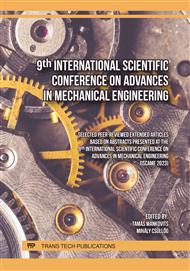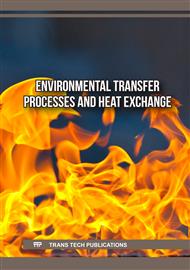p.41
p.53
p.67
p.77
p.91
p.103
p.117
p.127
p.139
Particular Aspects Regarding the Radiative Heat Transfer in Thermal Analysis of Steel-Concrete Composite Structural Elements
Abstract:
In a coupled analysis of steel-concrete composite structural elements, radiative heat flux is the main component of the heat transfer. The majority of the available methods to model the radiative heat flux are based on prescriptive values of the surface thermal properties of the participating medium, which do not take into account the specific geometry of the system and the effective values of the thermal properties of the participating medium. The prescriptive method assumes that the terminal properties of the participating medium are independent of the temperature and the wavelength of the electromagnetic radiation. The mentioned assumptions improve the formulation of the mathematical model which describes the physical phenomena, yet considering the number of parameters that influence the physical phenomenon, for example, the gray body assumption, or neglecting the local geometric conditions may cause the supraevaluation of the real situation. The present study assumes to establish on a quantitative and qualitative level the radiative heat flux for two situations. The first situation involves the radiative heat transfer between the flame and a solid surface, one of the first steps in the thermal analysis of composite structural elements. The evaluation of the thermal properties of the fame involves the influence of soot, which may enhance on a quantitative scale the radiative heat flux up to 42 [%]. The second case deals with the radiative heat transfer between two parallel solid surfaces, a particular case if one desires to model the thermal discontinuity between steel and concrete. The present study assumes to evaluate the thermal and geometric parameters that influence the radiative heat flux for a wide range of temperatures and compares the different approaches with the standard formulation. The local geometric conditions and the blackbody fraction introduced in the model enhance the value of the radiative heat flux by approximately 2 [%], for temperatures indicated by the ISO-834 standard fire curve, up to 1300 [K].
Info:
Periodical:
Pages:
91-102
Citation:
Online since:
September 2024
Authors:
Price:
Сopyright:
© 2024 Trans Tech Publications Ltd. All Rights Reserved
Share:
Citation:



